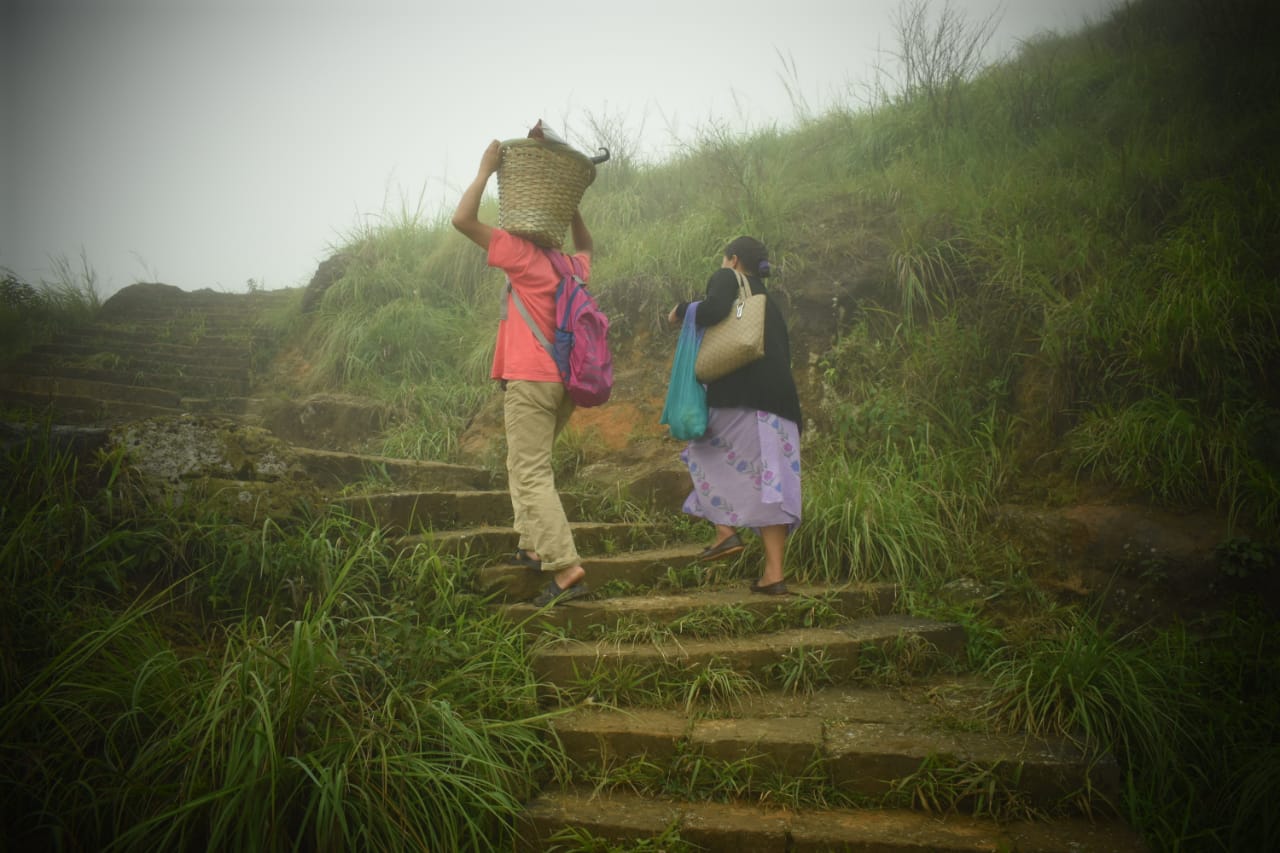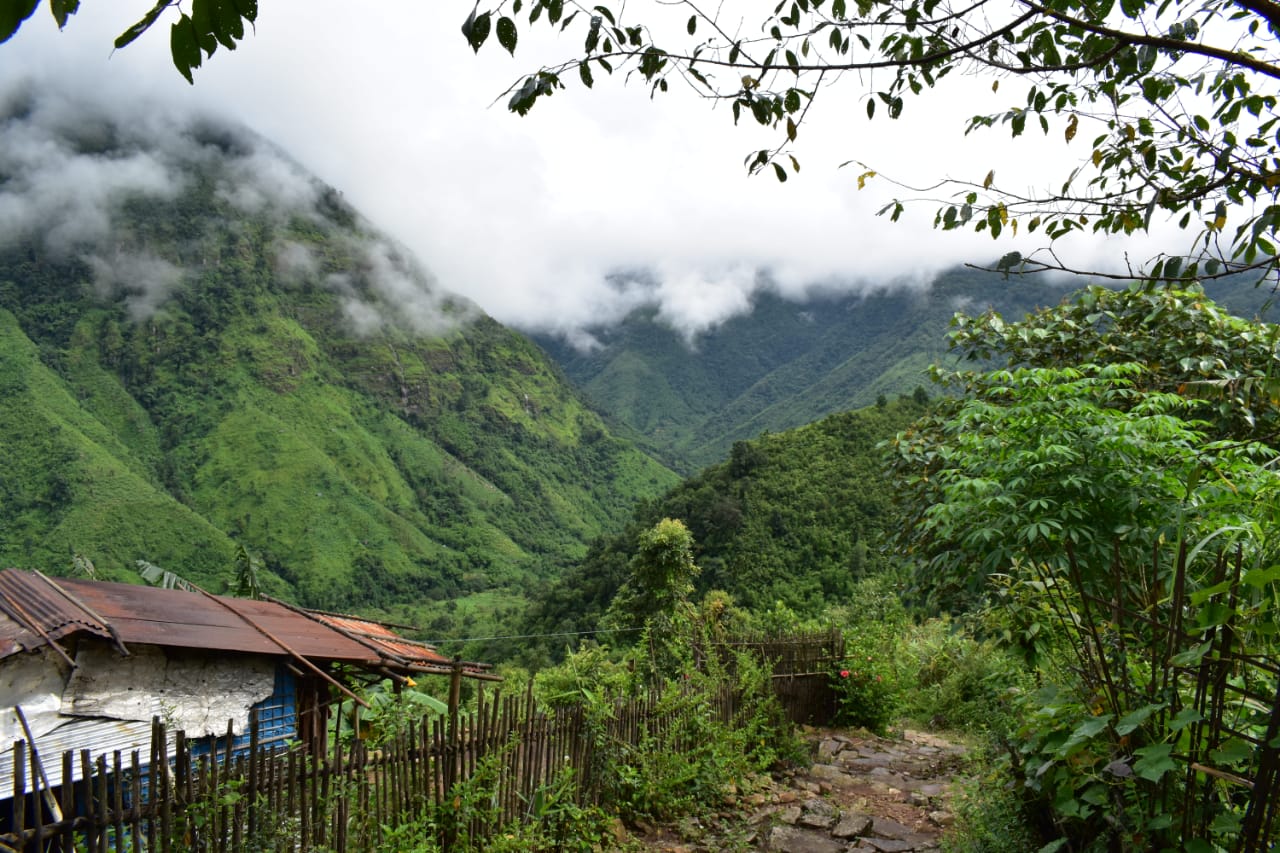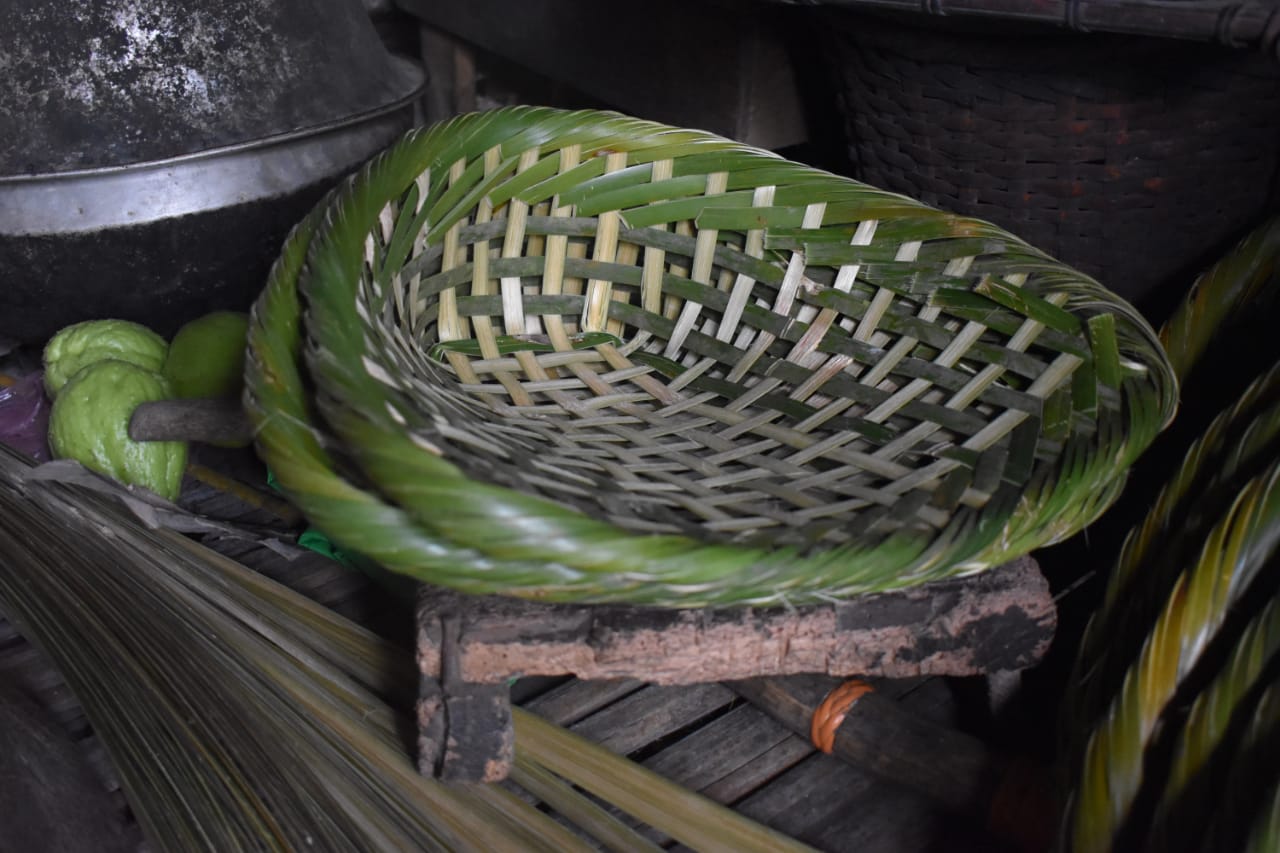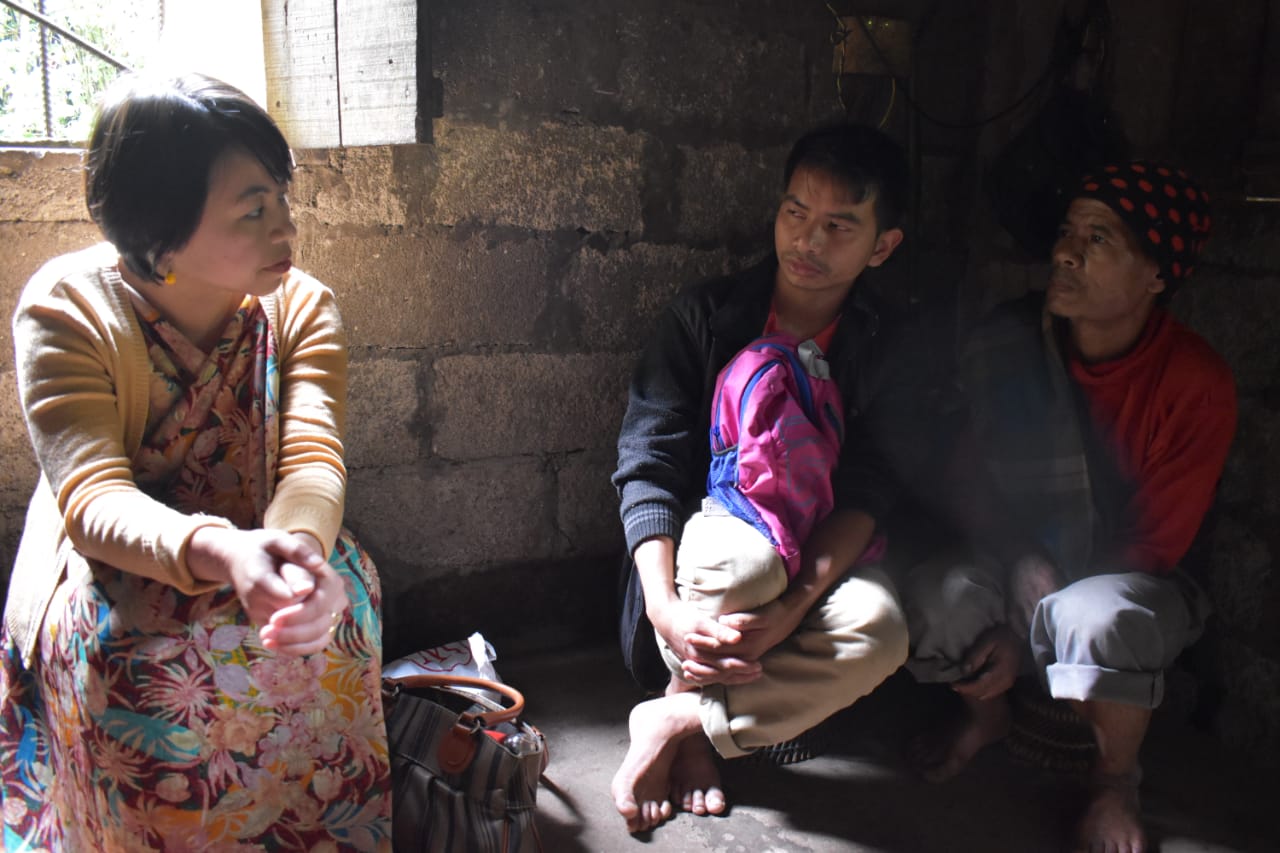Looking down the picturesque landscape as we move towards Sohra, there is small but significant village situated at the banks of the Wah Sohra River, the Wahsohra village. This is under the Laitkroh Community and Rural Development Block, East Khasi Hills District, Meghalaya, which is about 50 kms from the capital. It is a beautiful village which can be reached on foot, three thousand steps down the ridge from Sohra-rim. This well knit community has 12 households and a population of 52 people. Older people had said that this is an old village wherein people from this village have migrated to other places and started newer villages such as Dewlieh or Nongtraw and many others in the nearby areas and thus though small, but it is the polling station for the elections for all the nearby villages. It was interesting to see a small community rich in natural resources such as water, forest produce providing them fuel, food and medicinal herbs and other products such as bamboo. The river is clean and still has small fishes which contribute to the food diversity of the people. All the households are engaged in agriculture as their main occupation. Some of the crops cultivated are tapioca, sweet potato, yam, black berry (sohiong), banana, jackfruit. These communities also harvest wild edibles from the forests such as jali, jamyrdoh, jaieng etc..
Apart from engaging in their main occupation which is agriculture, the people also have another alternative livelihood activity, bamboo weaving. All the twelve households were involved in making bamboo baskets. As NESFAS is trying to work with bamboo artisans to reduce their drudgery and also to look at a possibility of diversifying products, it was important to understand what the bamboo artisans faced on a regular basis and also their views of the future of this livelihood activity. Thus, on August 24, 2018 we met with 8 bamboo artisans; one of whom is a woman, in the headman’s house at Wahsohra village.
Through the discussions, various insights were gained. The people considered bamboo basket weaving as an additional livelihood activity which they were engaged, both men and women during the time when they are at home i.e. rainy days or mostly in the evening. The men are mostly engaged in bringing the bamboo from the forests and cutting them into suitable sizes while the women would be engaged in weaving the bamboo, although this is not exclusively done by women, men are also engaged. This skill was learnt from their parents who practised it along with their parents. Children as young as 10 years old start to weave baskets. In fact the older generation made many more products (such as like pdung, prah, star and shylliah) which today, are not made anymore as the market is not favourable for such products and it consumes a lot of time to make such products. It was interesting to note that in the recent 1 to 2 years, after the ban on coal mining, many men do not go out as coal mine labourers anymore but engage themselves in agriculture and basket weaving. In the present context, the people make upto 12 types of baskets namely kriahsohsaw heh, kriahsohsawpdeng, kriahtihphan heh, kriahtihphan pdeng, kriahtihphan, kriahthew shiphew kilo, kriahthew san kilo, kriahlynhiat heh, kriahlynhiatpdeng, kriahbuhktungrit, kriahprah /kriahkhadmaw and kriahtyrtongsaitsohphlang. These baskets are mainly made for use in the markets for storing vegetables, fruits, dry fish and one is used in coal mines, thus they are not very fine bamboo weaves.
They sell these baskets in the Sohra market or sometimes, a supplier collects it from Sohra-rim village to supply it to other markets. The cost of one basket ranges from Rs. 35.00 to Rs.100.00 depending on the size. There is no particular system in which they follow to come to the price in which they set. Bah Ban (name changed) said “we discuss with the retailer in the Sohra Market, then we come to an agreement, because we all have to earn at all levels”. It was interesting to note that this livelihood activity can be done all year through and is a constant source of income for the households. Although this is the case, the people categorically mentioned that they would not give up agriculture for basket weaving though they spend almost an equal amount of time in both activities. Kong Iba (named changed) said “agriculture gives us food, the money we get from bamboo basket weaving is used for other needs, it may not be sustainable also as we are dependent on the market”. The artisans also said that they are happy with what they are making and do not want to diversify their baskets into fine weave bamboo products as they said that it takes a lot of their time but the market is uncertain. The baskets they are making now are in constant demand and almost every two weeks, each household is able to sell at least 40 baskets or more in the local markets.
The source of bamboo is from their cultivated land and forests. Once planted, the bamboo is ready to be harvested in 10 years. Some households have propagated bamboo in their land. There are four types of bamboo namely thri, ktang, siej and skhen. The skhen variety is the type which they use to make the baskets.
The bamboo artisans had discussed about the challenges that they face such as physical discomfort as they have to sit on the ground to make the baskets. They say that the hardest part of basket making is when they nearly complete the basket, they said “ban wai noh” i.e. to close the ends of the bamboo. Sourcing of bamboo though at present is from their land or forests, yet it is becoming scarce as many households have to lease land for cultivation of bamboo. The lease is usually for 4 to 5 years, but bamboo can be harvested only in 10 years. Therefore even if they plant, there is a risk as they might not be able to lease the same land anymore in the future. Another problem that the artisans face is the transportation of baskets, especially the bigger baskets. Since there is no road connectivity, labour charges of carrying the baskets to Sohrarim or to a market is Rs. 200 for 20 baskets. Thus the profits received are reduced. The other threat is the increasing use of plastic for storage. Bah Wan (name changed) said, “there may come a time when bamboo baskets will not be used anymore”.
 The artisans expressed that though they have not thought of another alternative to ease their drudgery while making the baskets, yet they were open to innovations. NESFAS would take 2 bamboo artisans, one man and a woman as part of a delegation of 16 bamboo artisans who will be going to IIT Guwahati on September 13, 2018 and learn about newer ways of bamboo weaving and innovations that could reduce drudgery of artisans. The delegation would consists of bamboo artisans from Khasi Hills, Jaiñtia Hills and Garo Hills areas. It is hoped that the understanding of one section of bamboo artisans has cleared the misconceptions that we may have as an organization and the visit to IIT Guwahati would assist the artisans to improve their livelihood.
The artisans expressed that though they have not thought of another alternative to ease their drudgery while making the baskets, yet they were open to innovations. NESFAS would take 2 bamboo artisans, one man and a woman as part of a delegation of 16 bamboo artisans who will be going to IIT Guwahati on September 13, 2018 and learn about newer ways of bamboo weaving and innovations that could reduce drudgery of artisans. The delegation would consists of bamboo artisans from Khasi Hills, Jaiñtia Hills and Garo Hills areas. It is hoped that the understanding of one section of bamboo artisans has cleared the misconceptions that we may have as an organization and the visit to IIT Guwahati would assist the artisans to improve their livelihood.
Prepared by: Merrysha Nongrum, Associate and Melari Shisha Nongrum, Executive Director, NESFAS
Photo courtesy: Riteilang Khongrangjem (rkr)
 Translate
Translate








